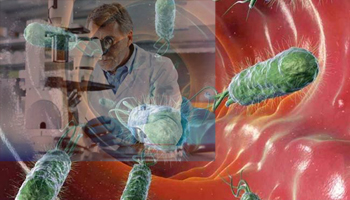Melbourne, Nov 27: Scientists have found that intestinal nitrogen plays a key role in regulating gut microbes, a finding that may help better understand how our diet impacts the microbiota.
 "There are many different diet strategies that claim to promote gut health, and until now it has been very difficult to establish clear causality between various types of diet and their effect on the host's microbiome," said Andrew Holmes, associate professor at University of Sydney.
"There are many different diet strategies that claim to promote gut health, and until now it has been very difficult to establish clear causality between various types of diet and their effect on the host's microbiome," said Andrew Holmes, associate professor at University of Sydney.
"This is because there are many complex factors at play, including food composition, eating pattern and genetic background," said Holmes.
"This research really lays the groundwork for future modelling by setting out the rules for a general model of how diet shapes the gut ecosystem," Holmes said.
"The simple explanation is that when we eat in a way that encourages cooperation between ourselves and bacteria we achieve a good microbiome, but when we eat in a way that doesn't require cooperation this lets bacteria do whatever they want - and mischief can ensue," he said.
The balance of gut bacteria in the microbiome plays a key role in such functions as immune regulation and digestive wellbeing, and has been linked to other health outcomes like obesity.
Past studies have identified several patterns for how diet influences the microbiome, yet this has not led to a workable model that explains microbial response across many different types of diets.
The new research is the latest in a series stemming from a seminal study in which 25 different diets composed of different amounts of protein, carbohydrates and fat were systematically varied in 858 mice.
Despite the huge diversity of gut bacteria, two main response patterns emerged in the study - microbe species either increased or decreased in their abundance depending on the animal's protein and carbohydrate intake.
"The largest nutrient requirements for our gut bacteria are carbon and nitrogen in the foods we eat," said Holmes.
"As carbohydrates contain no nitrogen but protein does, the bacterial community response to the host animal's diet is strongly affected by this diets' protein-carbohydrate ratio," he said.
"The fact that this same pattern was seen across almost all groups of gut bacteria indicates that the makeup of the microbial ecosystem is fundamentally shaped by a need to access nitrogen in the intestinal environment," he said.
The new model suggests that while high-carbohydrate diets were the most likely to support positive interactions in the microbiome, such benefits were relative to the protein intake of the host animal.
Researchers hope the new findings will lay the foundations for more accurate computer simulations to test hundreds of different diet variants, helping to better predict which dietary combinations lead to optimal gut health.





Comments
Add new comment